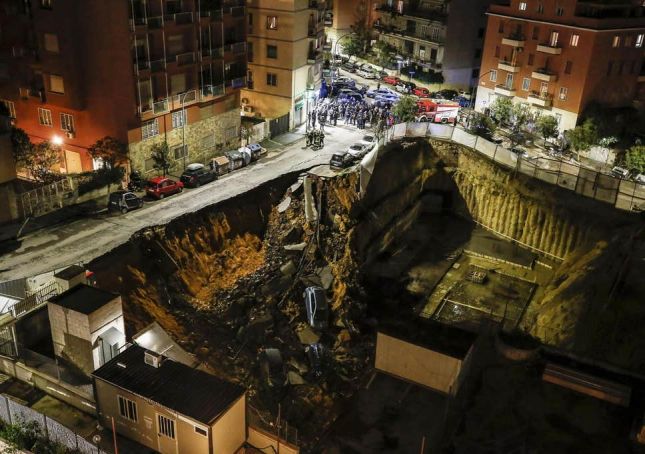100 chasms opened up on Rome streets in 2019.
There is renewed focus on the phenomenon of Rome's sinkholes - chasms opening up on streets around the capital - following the news of a 24-apartment building near the Colosseum being evacuated after the pavement outside caved in.
In recent years Rome has experienced a sharp rise in the number of sinkholes opening up on its streets, according to the Italian Institute for Environmental Protection and Research (ISPRA).
The total number of sinkholes recorded in Rome during 2019 was 100, however this number was actually a decrease from the capital's record 175 chasms the year before.
By comparison, Naples - noted for its labyrinth of underground tunnels - recorded just 20 chasms in 2019.

Rome's average annual number of sinkholes registered in the decade leading up to 2018 was 90. The figures of the last two years are even higher when compared to the average of 16 chasms per year between 1998 and 2008.
ISPRA says the main cause of the collapses is Rome's underground tunnels, sewers and ancient quarries, resulting in a maze extending hundreds of kilometres under the city, with the location of many cavities either unmapped or unknown.

Experts say the problem is compounded by water leaks and years of rapid urbanisation, with high-rise building taking place where construction should have been discouraged, often without proper surveys to ascertain if the ground below was solid or empty.
The areas most affected by sinkholes are the eastern suburbs of Tuscolano, Prenestino, Tiburtino, Centocelle and Appio; districts west of the Tiber such as Monteverde Vecchio, Gianicolense and Portuense; as well as the more central areas of S. Giovanni, Aventino, Palatino and Esquilino.

















